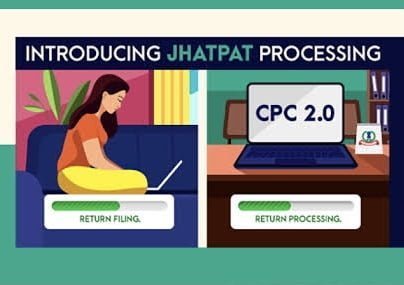Have you filed your Income Tax Return (ITR)? Are you one of those who leave everything for the last minute? Well, as the deadline for filing ITR for the Financial Year 2019-20 is coming closer, the Income Tax Department has come up with the ‘Jhatpat Processing’ feature.
What is ‘Jhatpat Processing’ feature
This new initiative of the tax department will enable taxpayers in the smooth filing of ITR-1 and ITR-4. The IT department also tweeted about the introduction of the new feature, “Introducing Jhatpat Processing! Forget the hassle of long waiting hours & file on time. File Karo Jhat se Processing Hogi Pat se. Processing started for ITR1&4,” the tweet read. This has already been launched for ITR-1 and 4 forms, and taxpayers can file their ITR by visiting the e-filing website.
Who all can access ‘Jhatpat Processing’ feature‘
‘Jhatpat Processing’ is only possible if the taxpayer’s ITR is verified, the bank account is pre-validated. There should be no mismatch in tax deducted from the source (TDS), and also no income discrepancy.
ITR filing: Keep following documents with yourself
-PAN
-Form-16
-Form 26AS
-Bank Statement
-Aadhaar
Deadline of filing ITR ends soon
The deadline to file IT returns by individual taxpayers for 2019-20 ends on 31 December 2020. In normal circumstances, taxpayers are usually supposed to file ITR by 31 July 31. The due date was extended in view of the coronavirus pandemic.
Also Read| ITR filing: Do you know all about the documents required?
4.37 crore taxpayers filed ITR till 28 December
Over 4.37 crore taxpayers have already filed their income tax returns for assessment year (AY) 2020-21 till 28 December, the Income Tax Department said on Tuesday.
How to select the right ITR form
Returns in ITR-1 Sahaj can be filed by an ordinarily resident individual whose total income does not exceed Rs 50 lakh.
ITR-2 is filed by people having income from residential property.
ITR-3 and 6 are filed by businesses.
ITR-4 Sugam is meant for resident individuals, HUFs and firms having a total income of up to Rs 50 lakh.
ITR-5 is filed by LLP and Association of Persons (AoPs).
ITR-7 is filed by a person in receipt of income derived from property held under trust or other legal obligation wholly for charitable or religious purposes or in part only for such purposes.









RBI to lenders: Stop charging compound penal interest on loans
Income Tax Return (ITR) filing: What happens if you fail to do so
MF investors won’t be able to redeem money if…